Lobelia erinus: varieties and cultivation features
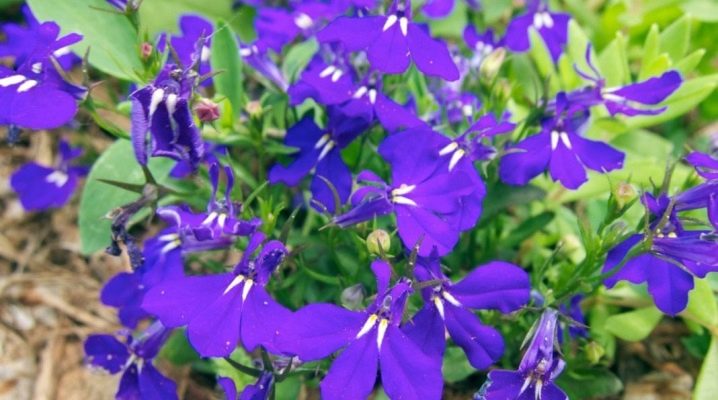
Lobelia erinus is an excellent plant that can decorate any flower bed or interior. The flower can get along well with many other plant varieties, creating a unique and vibrant composition. Today, many varieties are known, of which about 20 are popular among Russians. This is due to the beauty of the plant and its unpretentious care.

If you want to acquire such a beautiful flower as Lobelia Erinus, then this article is for you. In it we will tell you about all the features of the flower, about the most popular varieties, as well as about planting and care.
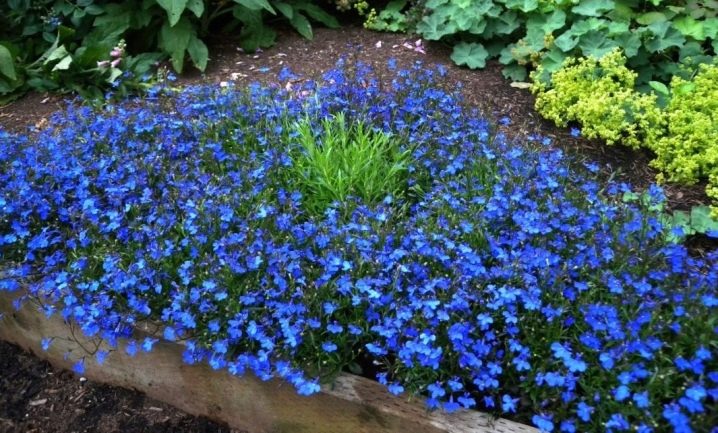
Plant features
This type is valuable not only for professional flower growers, but also for ordinary people who like to decorate their areas with beautiful plants and create interesting flower arrangements. This is not surprising, since for Lobelia, Erinus lush flowering is characteristic, which can last until winter frosts.
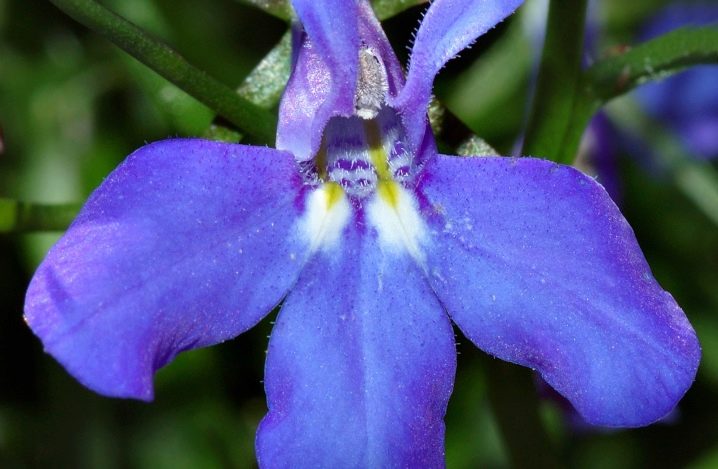
It is worth noting that this type of plant was named after a traveler from France Loic de Lobel.
By itself, the flower grows in the form of a small bush that is prone to branching. When the flowering period begins, the plant becomes dotted with many small flowers of different colors. The main shades of the flower bowl:
- White;
- blue;
- pink;
- blue.
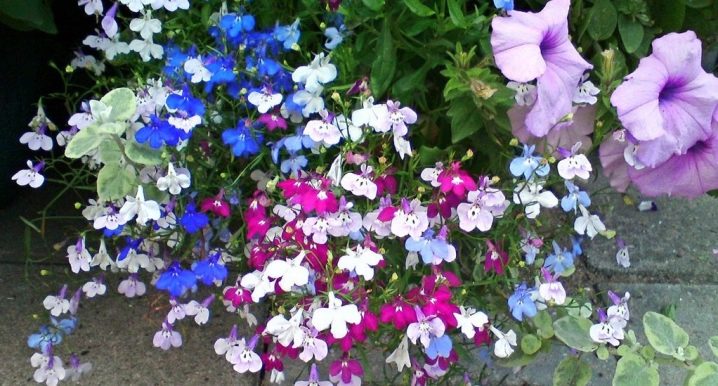
Lobelia erinus is a perennial plant that is commonly grown as an annual. It is characterized by the following features:
- highly curly stems with lanceolate-linear foliage;
- a small dense artisanal plant that can reach up to 25 centimeters, the shape of the bush is similar to a spherical;
- flowers can grow in different sizes depending on the variety, the average size is 2 centimeters;
- the presence of one bud in the axils of the foliage is characteristic;
- a wide range of colors, but most of them are close to cold shades;
- the plant loves a lot of solar heat and requires abundant watering;
- has good cold resistance.
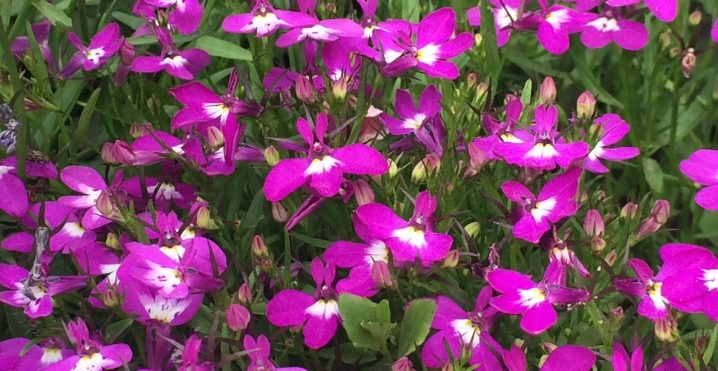
It is customary to distinguish 5 main forms of this type of plant. They are all classified according to their size and structure.
- Sprawling. The height reaches 15 centimeters, and the length of the shoot varies from 15 to 30 centimeters.
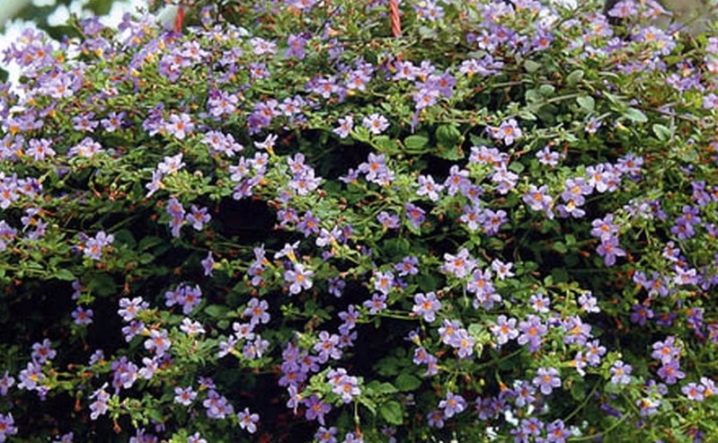
- Compact. Height can be from 15 to 20 centimeters. The bush itself is dense, and its shape is spherical.
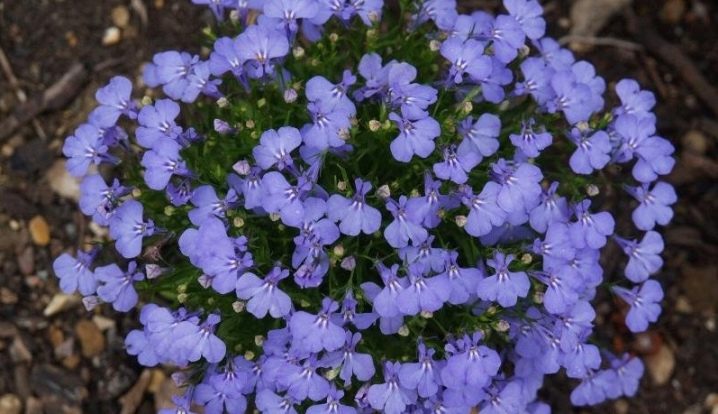
- Dwarf. Its height ranges from 8 to 12 centimeters.
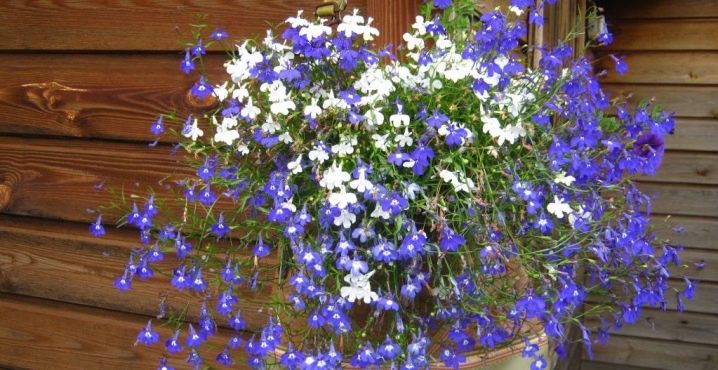
- Erect. The name speaks for itself, so the height can go up to 25 centimeters.

- Hanging... Has an ampelous shape. The shoots of this plant spread over the ground and take root, which can result in a beautiful colored rug.
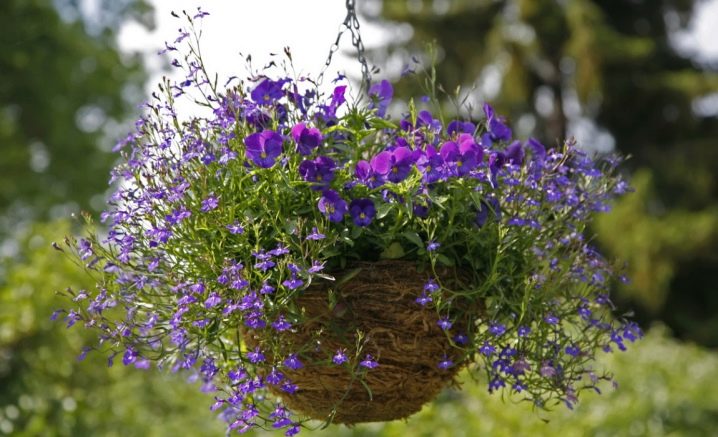
The flowering period of all varieties begins no earlier than 70 days after sowing. The flowering period itself is quite long - from June to September (sometimes before the first frost begins). Some gardeners cut off already faded peduncles and thereby prolong the flowering period of the plant. In place of wilted stems, special fruits begin to form, inside which there are small seeds. Their germination lasts exactly 3 years.

You can pick up any kind of Lobelia Erinus you like and plant it in your flowerbed or place it on the windowsill among the rest of the "pets". Having acquired such a plant, you will never have to regret it, since it will be pleasant to delight you with its beautiful and lush flower stalks.
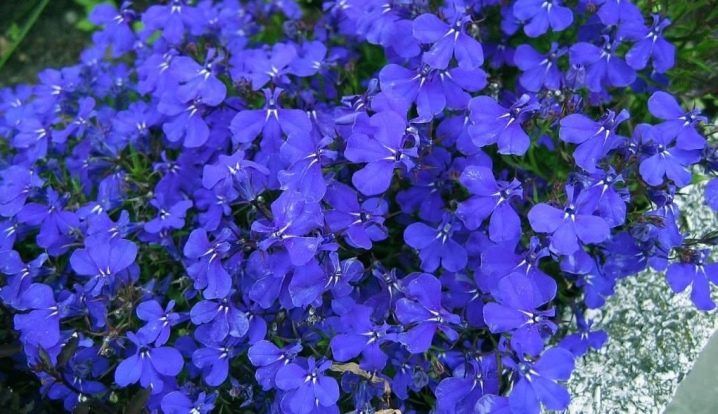
Types and their description
There are many varieties of Lobelia Erinus. Among the entire assortment, you will certainly be able to choose the best option for your flower garden or windowsill.
Variety "Royal Palace" (second name - Climbing Lobelia):
- grown as annual;
- the form - dwarf;
- height - about 10 centimeters;
- crown - spherical, rather dense;
- branches - strongly branched, thick;
- flowers - bright crimson hue, grow up to 2 centimeters;
- foliage - satin, saturated color, oblong, densely planted throughout the stem, grows alternately;
- place of cultivation - flower garden, flower bed, pot.
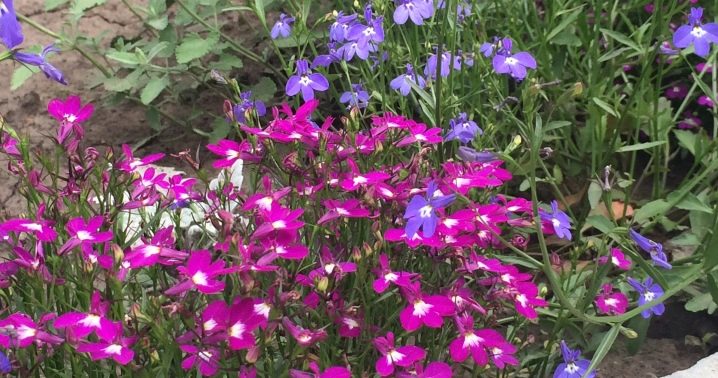
Sort "Crystal Palace":
- grown as annual flower;
- the form - compact;
- height - approximately 12-15 centimeters;
- crown - spherical and dense (sometimes it can be lush);
- branches - start from the base of the crown, thin;
- flowers - purple or blue (there are especially many of them during the flowering period), grow up to 3 centimeters;
- foliage - small in size, dense, densely planted, grows alternately, has a rich bronze color;
- place of cultivation - flower beds, gardens, parks, borders.
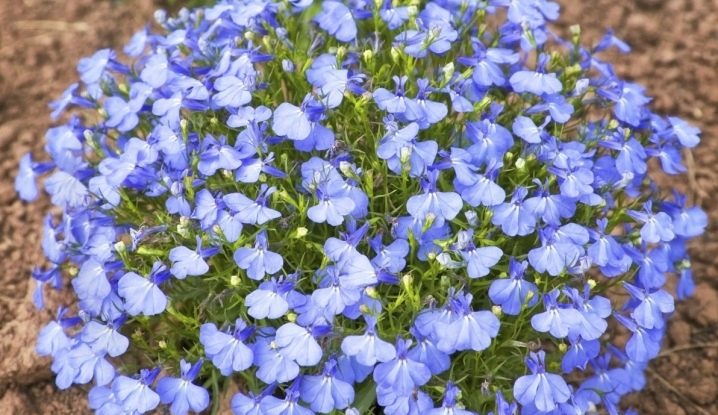
Pearl thread grade:
- grown as annual;
- the form - compact bush;
- crown - dense, with abundant foliage;
- the size - about 10-12 centimeters;
- branches - strongly branching from the base of the crown, thin;
- peduncles - blue, pink, purple and white shades, grow on short legs and can reach up to 2 centimeters, two-lipped, one in the axils of the foliage;
- foliage - small, solid, lanceolate-linear;
- place of cultivation - flower beds, flower beds, borders, baskets.
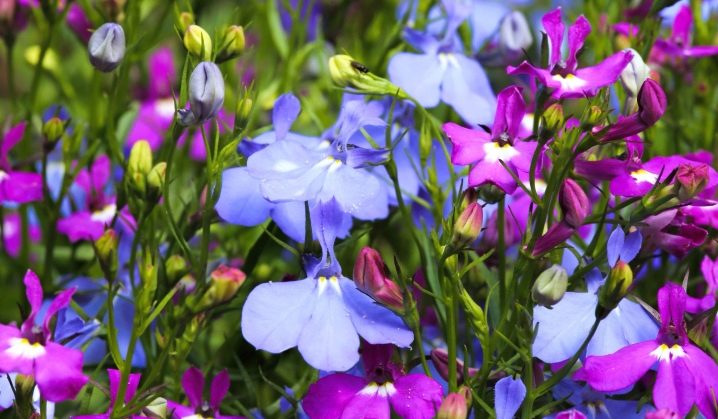
Variety "Rosamund":
- grown as annual flower;
- the form - compact bush;
- crown - spherical;
- height - from 10 to 15 centimeters;
- stems - strongly branching from the base of the crown, densely covered with two-lipped flowers;
- peduncles - red with a white eye in the middle, reach 2 centimeters, grow on short legs, usually grow one at a time in the foliage axils;
- place of cultivation - a group planting in flower beds is suitable.
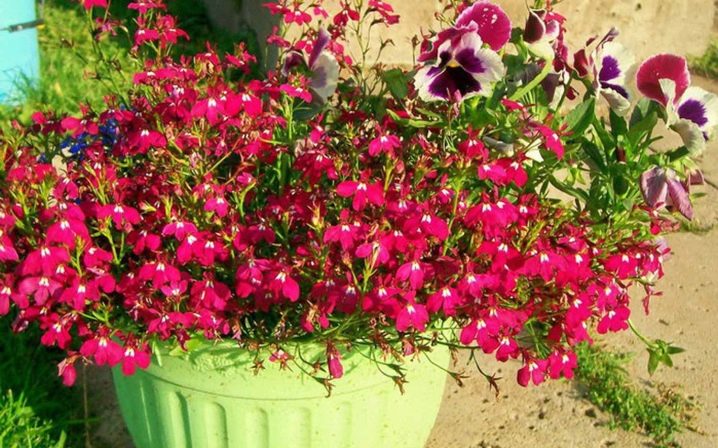
Variety "Emperor Willy":
- grown as annual;
- the form - compact bush;
- crown - spherical, rather lush;
- the size - up to 10 centimeters;
- stems - densely leafy, strongly branching from the base of the crown, thin;
- flowers - bright blue, grow on short legs and can reach up to 2 centimeters, two-lipped, one at a time in the axils of the foliage;
- foliage - small, solid, lanceolate;
- place of cultivation - open ground, basket.

Planting and growing
The key to rapid growth and fruitful flowering lies primarily in the correct conduct of all the processes of planting a flower. In order for everything to go well, you should adhere to some fairly simple recommendations of experienced florists.
The cultivated soil will be the ideal soil for plantingas it contains all the essential nutrients and minerals. However, an excessive amount of nutrients can provoke a flower to grow too quickly. This, in turn, is fraught with the absence of peduncles. It is necessary to plant seedlings after May 15, when the threat of frost has completely passed.
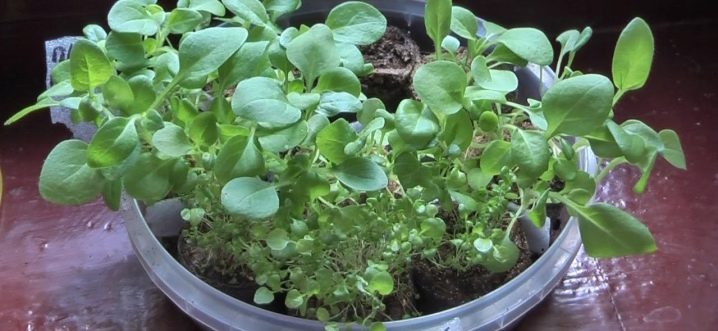
The seed growing period is in January-March. They must first be germinated at home. We draw your attention to the fact that during the preliminary preparation of the seeds for planting, in no case should they be covered with soil on top. The first shoots should appear after three weeks.
If this does not happen, then you need to put a plastic bag on a bowl with seeds and refrigerate for one month.
After this time, it must be taken out and placed on a windowsill or in a special greenhouse. As soon as you see a few leaves, the seedlings should be planted in separate cups.
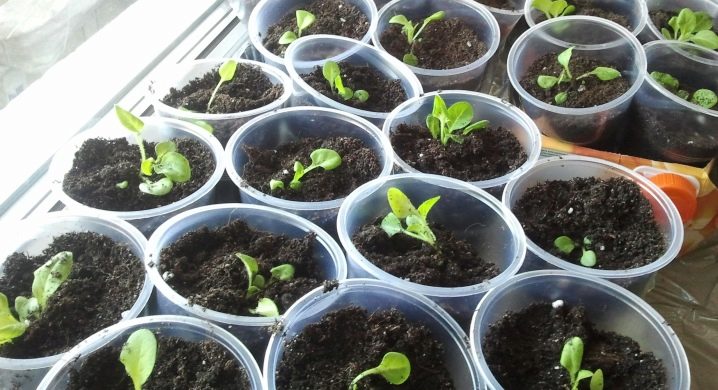
The landing is carried out in several pieces with a distance of approximately 15 centimeters between each "pile". By the time of planting, the seedlings, as a rule, already have formed buds.
Flower care
Despite the fact that the birthplace of Lobelia Erinus is the southern part of Africa, it does not require any special care at all. All you need to do is follow some simple plant care guidelines.
- Seed collection should be carried out exclusively in the fall. Remember to keep the plant you harvest from is completely healthy.
- Watering should be small. If the water stagnates, then it is better to resort to installing a drainage system.
- In order to extend the flowering period of the plant, you need to cut off the stems with wilted peduncles.
- Lobelia Erinus should be fertilized in a complex and only a few times during one season. Top dressing containing nitrogen and ash is recommended, as they affect the acceleration of the ejection of shoots and the formation of buds.
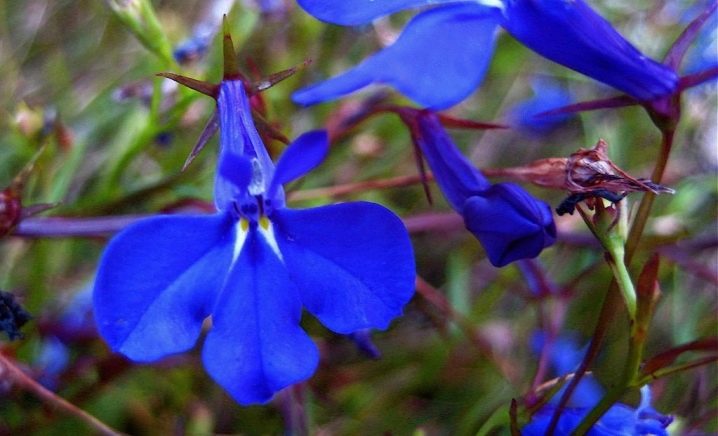
This type of flower is truly one of the most versatile plants that can be grown both at home and in a flower bed. You can combine it with different types of flowers. For example, it will look harmoniously in a flower garden with:
- marigolds;
- mimolus;
- petunias;
- alissum;
- salvias and many other species.
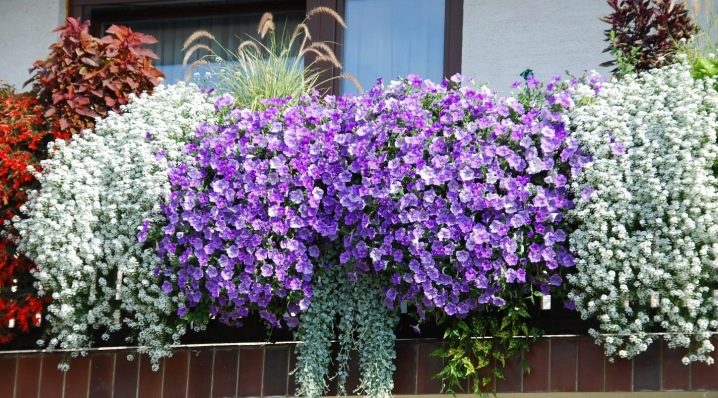
It is best to resort to a contrasting combination of shades of different varieties. Lobelia Erinus is characterized by cold tones, which will look unusual with bright shades.
You can learn more about growing and caring for lobelia in the following video.





































































































The comment was sent successfully.